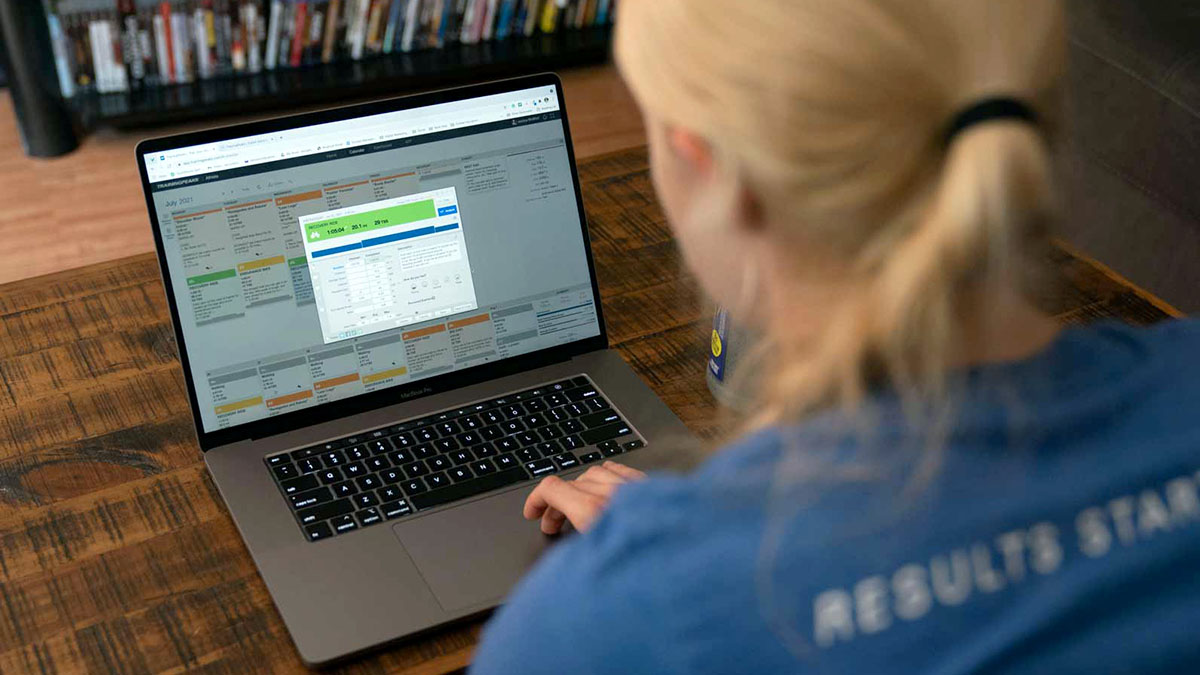To fully understand how to train an athlete and help them peak at the perfect time for their race, coaches need to understand three key markers expressed in the Performance Management Chart. The markers are the Acute Training Load (ATL), Chronic Training Load (CTL) and the Training Stress Balance (TSB).
The root of all data in TrainingPeaks comes down to duration and intensity which produce a Training Stress Score. As coaches, we want to ensure that our athletes are always progressing and avoiding injury. However, we also want to make sure that we understand the near-term and long-term impacts of their training. This is why it’s crucial to understand the PMC and ultimately paint a masterpiece with our athletes’ training data.
To read this post in Spanish, click here.
Training Stress, Intensity and Fitness
ATL, CTL, and TSB allow us as coaches to take both a long-term view into the past of our athlete, a current view of fitness, as well as project into the future when using the PMC. This all goes back to the root metric of TSS (Training Stress Score) which scores a workout based on duration and intensity as a factor of threshold (Pace, Heart Rate, and Power). Read more about how each metric is calculated here.
CTL – Chronic Training Load | Fitness
Think of Chronic Training Load as a measure of your true fitness. It’s an ongoing average of your daily training (TSS load) specifically looking at the last six weeks or 42 days of data points. This ultimately shows your long-term training load and gives a trend line of where the athlete is going. A positive (upward) trending line shows an increasing training load and decreasing (downward line) shows a decreasing level of incurred training load.
Steady progression is key to preventing injuries. Large spikes in CTL correlate with a large amount of incurred training stress. Very fit athletes can increase their CTL up to five-to-seven points a week. As coaches, we should ensure that a large amount of training load pairs with a substantial recovery to avoid injury.
CTL and TSS are related and you can use the scale below to determine the intensity of a workout with respect to your current fitness. In this example, we’ll assume the athlete has a CTL of 50.
Hard Workout – A hard workout will result in a TSS score that is 50%-100% above your current CTL (TSS for a hard workout would be 75 – 100 TSS.)
Moderate Workout – A moderate workout will result in a TSS score that is 25% above your current CTL (TSS for a moderate workout would be 60-70 TSS.)
Easy Workout – An easy workout will result in a TSS score that is 10-25% below your current CTL (TSS for an easy workout would be 35-40 TSS)
ATL – Acute Training Load | Fatigue
Acute Training Load looks at how your most recent training impacts your body. Acute Training Load calculates a rolling average of your workout TSS over the last seven days. There is a correlation between fatigue and fitness scores—when your fatigue score is less than your current fitness score, you will normally see a positive TSB value. However, if you are deep into training you will see a fatigue score that is greater than your CTL score.
Carefully monitor an athlete’s ramp for every value as heavy fatigue loads can be deceiving and require a longer recovery time. Steep inclines indicate large loads and will result in a significant and resultant inverse TSB. If you’re doing lots of high TSS workouts, you can expect high ATL scores. You can bring down high ATL scores by doing recovery (low TSS) workouts in addition to rest days.
TSB – Training Stress Balance
Training Stress Balance is the “ready to race” metric where the more negative the number, the deeper in “the hole” an athlete is and the more positive the number the more recovered and ready perform the athlete is. Just like ATL, this is a near-term metric that measures your form and gives insight into the athlete’s race readiness. This metric has a couple of rough rules that can help guide athletes and coaches. Athletes should rely on their past experiences and recent performances to determine how recovered they need to be to perform well.
- Joe Friel has mentioned numerous times that an ideal TSB range for a peak performance falls between +15 and +25. While zero indicates the athlete has reached a training equilibrium, complete recovery is often needed for peak performance, especially for long-distance racing.
- The ideal training zone for TSB falls between -10 and -30. If athletes push beyond -30 they are headed for extreme strain or have recently completed an extensive race effort. Numbers extending beyond -30 will require consecutive days of rest to achieve the necessary recovery for future performance.
- The opposite is true as well—if you start to see +15 to +25 TSB you are extensively recovered and essentially losing fitness.
Modifying Prior Data
Reliable data creates a clear picture of your athlete’s fitness and as coaches, we’re not only responsible for keeping an eye on the athlete’s fatigue and fitness, but we’re also responsible for maintaining our athlete’s zones. Incorrect zones will undercut any planning and projecting you’re doing on behalf of the athlete. Athletes will need regular workouts and fitness tests to help them manage their progression. Properly managed data allows you to maximize the effectiveness and density of your workouts.
It’s imperative to set the athlete’s zones correctly before you can have any confidence in the information being produced. It takes 42 days to get concrete CTL when starting fresh. Make sure you’ve had a chance to review all past data and ensure that the PMC is an accurate reflection of the athlete’s recent training. You can find more information about managing the Performance Management Chart in this Article on Data Quality.



